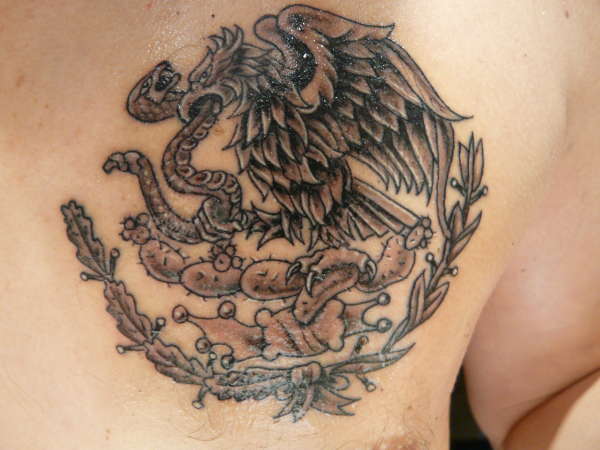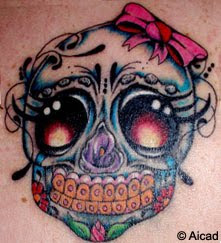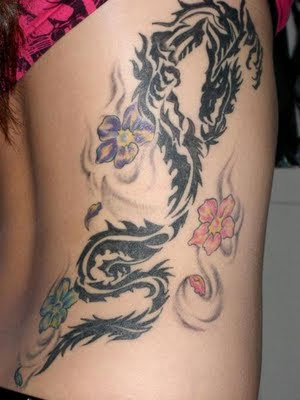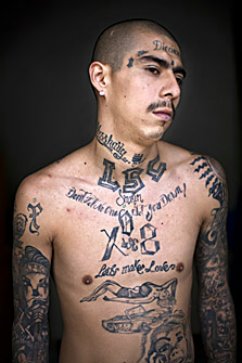The Mexican Mafia (also known as Le EME) was formed in 1957 by Chicano gang members at Deuel Vocational Institution. In 1992, La EME membership was right at about 700 people. In 1998, it doubled to almost 1,500 people. Today, the membership continues to soar. Outside of prison, La EME is still an ominous threat to people, responsible for 10% of San Antonio's homicide rate. California and Texas prisons both have large numbers of La EME gang members; however, these two branches of the gang are not linked. While both branches are under the umbrella name of the Mexican Mafia, the Texas branch calls itself "Mexikanemi" and the California branch "La EME." There are also differences in name between southern California branches, Surenos, and northern California branches, Nuestra Familia.


The Mexican Mafia has a strict, written constitution that members must follow. The San Antonio Express-News learned from a 2005 trial that the Mexican Mafia "shall deal in drugs, contract killings, prostitution, large-scale robbery, gambling, weapons and everything else imaginable." This constitution also outlines that members released from prison become "free-world soldiers," required to serve the gang's economic interest by dealing in drugs, racketeering and prostitution outside the prison. The most recently released parolees, deemed "Wolfpacks," carry messages to gang leaders from inside the prison. There are 12 basic rules outlined in the Mexican Mafia's constitution, including membership for life, a high level of integrity, and every member has the right to wear the Mexican Mafia Tattoo (discussed below). The Mexican Mafia does not have one specific leader; rather, there are many leaders with various "ranks" in the gang.


One former Mexican Mafia leader, Rene Enriquez, came out and revealed some of the secrets of the gang. Enriquez once killed for the gang and also ordered the deaths of men and women in prison and on the streets. When Enriquez decided to leave the gang in 2002, he became the highest-level Mexican Mafia leader to work with the police. According to NPR, Enriquez looks like the typical gangster with many of the gang's tattoos displayed on his body. Enriquez, however, believes he is not the typical gangster. "I believe I'm a cut above the rest. As a mafioso, you have to be an elitist. You have an elitist, arrogant mentality. That's how you carry yourself in the Mexican Mafia. That's how you project yourself." Enriquez was involved in organized crime for 20 years, 17 of which were with the Mexican Mafia. In 2002, when Enriquez decided to "defect" from the Mexican Mafia, this put him at the top of the gang's hit list. Today, he has many regrets, but ponders the fact that a bunch of high school dropouts have been able to turn the entire criminal justice system upside down. "I was rather proud of being a Mexican Mafia member. I did things in the organization that some people had never done. We pushed towards being a financial success. We started thinking about intellectual progress, the infiltration of society," Enriquez says. He also finds it ironic that a lot of his former enemies - cops - are now his protectors and friends. He is currently in prison serving a double life sentence for murder.


The Mexican Mafia's first symbol is the national symbol of Mexico - an eagle and a snake around a wreath, lying on crossed swords.






mexican tattoos

mexican tattoos

The Mexican Mafia has a strict, written constitution that members must follow. The San Antonio Express-News learned from a 2005 trial that the Mexican Mafia "shall deal in drugs, contract killings, prostitution, large-scale robbery, gambling, weapons and everything else imaginable." This constitution also outlines that members released from prison become "free-world soldiers," required to serve the gang's economic interest by dealing in drugs, racketeering and prostitution outside the prison. The most recently released parolees, deemed "Wolfpacks," carry messages to gang leaders from inside the prison. There are 12 basic rules outlined in the Mexican Mafia's constitution, including membership for life, a high level of integrity, and every member has the right to wear the Mexican Mafia Tattoo (discussed below). The Mexican Mafia does not have one specific leader; rather, there are many leaders with various "ranks" in the gang.
mexican tattoos

mexican tattoos

One former Mexican Mafia leader, Rene Enriquez, came out and revealed some of the secrets of the gang. Enriquez once killed for the gang and also ordered the deaths of men and women in prison and on the streets. When Enriquez decided to leave the gang in 2002, he became the highest-level Mexican Mafia leader to work with the police. According to NPR, Enriquez looks like the typical gangster with many of the gang's tattoos displayed on his body. Enriquez, however, believes he is not the typical gangster. "I believe I'm a cut above the rest. As a mafioso, you have to be an elitist. You have an elitist, arrogant mentality. That's how you carry yourself in the Mexican Mafia. That's how you project yourself." Enriquez was involved in organized crime for 20 years, 17 of which were with the Mexican Mafia. In 2002, when Enriquez decided to "defect" from the Mexican Mafia, this put him at the top of the gang's hit list. Today, he has many regrets, but ponders the fact that a bunch of high school dropouts have been able to turn the entire criminal justice system upside down. "I was rather proud of being a Mexican Mafia member. I did things in the organization that some people had never done. We pushed towards being a financial success. We started thinking about intellectual progress, the infiltration of society," Enriquez says. He also finds it ironic that a lot of his former enemies - cops - are now his protectors and friends. He is currently in prison serving a double life sentence for murder.
mexican tattoos

mexican tattoos

The Mexican Mafia's first symbol is the national symbol of Mexico - an eagle and a snake around a wreath, lying on crossed swords.
mexican tattoos

mexican tattoos

mexican tattoos

mexican tattoos

mexican tattoos

mexican tattoos
